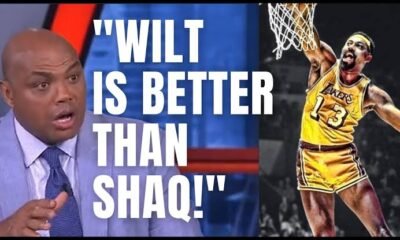American Football
Breaking news:The Strange Turning Point In Davante Adams’ Trade Talks
Davante Adams’ trade talks in 2022
marked a significant turning point in the
landscape of the NFL, showcasing not just the player’s immense talent, but also
the complexities of modern sports
negotiations. After a successful tenure
with the Green Bay Packers, where he
established himself as one of the premier
wide receivers in the league, Adams
sought a change. His desire for a trade
was not just about new opportunities but
was also heavily influenced by contract
negotiations and his relationship with
the Packers organization.

The offseason began with speculation
about Adams’ future. Despite being one
of the most productive receivers in the
NFL, he was playing under the franchise
tag, which led to friction over his long-
term contract. Adams had made it clear
that he wanted a deal that reflected his
status among the elite wide receivers.
The Packers, grappling with their own
salary cap constraints, were hesitant to
meet his demands. This created a rift,
leading to discussions of a potential
trade.
The turning point came during the NFL
Draft. The Packers were in a position to
leverage their assets, and Adams’ name
became a focal point. Various teams
showed interest, but the Las Vegas
Raiders emerged as a serious contender.
The Raiders, fresh off a coaching change
and looking to revamp their roster, saw
Adams as a pivotal piece to their
offensive strategy. His connection with
quarterback Derek Carr, a former college
teammate at Fresno State, added an
emotional layer to the potential deal.
Negotiations intensified as both sides
recognized the mutual benefits. The
Packers, facing a tough decision, weighed
the prospect of a significant trade
package against the potential loss of their
star receiver. The Raiders, desperate for
a game-changing talent to rejuvenate
their offense, were willing to part with
valuable draft picks to secure Adams’
services.
Ultimately, the deal was finalized,
sending shockwaves through the NFL.
The Packers received a first and second-
round pick in exchange for Adams,
signaling a clear shift in their approach
to roster building. For Adams, this trade
was not merely a change of scenery; it
represented a fresh start in a new
environment where he could thrive.
Joining the Raiders provided him with an
opportunity to be the focal point of an
offense, and he relished the chance to
reunite with Carr.
This trade not only altered the trajectory
of Adams’ career but also had wider
implications for the league. It illustrated
the increasing willingness of players to
seek new opportunities when their needs
are not met, a trend that has been
growing in the NFL. Teams are now more
open to making bold moves,
understanding that retaining elite talent
often requires significant investment.

From a strategic perspective, the trade
highlighted the importance of
adaptability in roster management. The
Packers, despite losing one of their top
players, shifted their focus to building a
younger core through the draft.
Meanwhile, the Raiders aimed to create
an explosive offense capable of
competing in a tough AFC West division.
Adams’ transition to the Raiders was met
with excitement but also high
expectations. Fans and analysts were
eager to see how he would fit into a new
system and whether he could maintain
his elite production levels. The initial
weeks of the season showcased his skills,
proving that he could quickly adapt and
become a vital component of the Raiders’
offense.

In conclusion, the trade of Davante
Adams marked a pivotal moment in NFL
history. It encapsulated the evolving
dynamics of player-team relationships
and the ongoing battle between
individual aspirations and
organizational goals.As the NFL
landscape continues to change, Adams’
trade serves as a reminder of the
powerful impact one player can have on
multiple franchises, and it sets a
precedent for future negotiations in an
increasingly player-driven league. The
implications of this trade will resonate
for years to come, shaping how teams
approach talent retention and
acquisition.
-

 Basket Ball5 months ago
Basket Ball5 months agoNBA Legends Explain Why Wilt Chamberlain Was Better Than Everybody. Take a look at what he said ⬇️⬇️
-

 Uncategorized3 months ago
Uncategorized3 months agoWishing Anthony Delon a Happy Birthday: Celebrate with Him Today! 🎂
-

 Uncategorized3 months ago
Uncategorized3 months ago**Hollywood Icon Robert Redford Passes Away at 87
-

 Uncategorized4 months ago
Uncategorized4 months agoPat Metheny gives his explanation for retiring: “I know this would hurt my fans, but I have no other choice.”
-

 Uncategorized4 months ago
Uncategorized4 months agoAgnetha Fältskog explains why she decided to retire: “I have no choice but to do this, even though I know it will upset my fans.”
-

 Uncategorized4 months ago
Uncategorized4 months agoI bid you farewell: Pat Metheny declares his retirement date because of…
-

 Uncategorized3 months ago
Uncategorized3 months agoJoyful News: Anthony Delon and Sveva Alviti Announce They’re Expecting Their First Baby—Congratulations to the Happy Couple!
-

 NFL4 months ago
NFL4 months agoCongratulations to Lamar Jackson, who announced today that he and his wife will be getting married.
